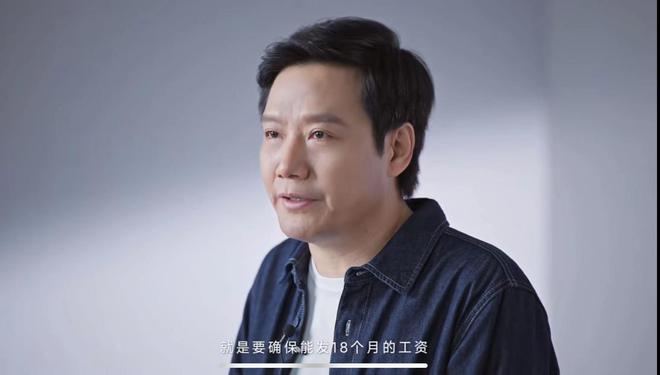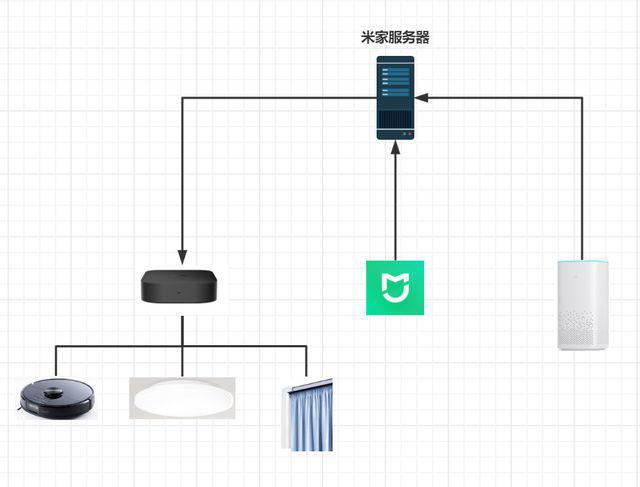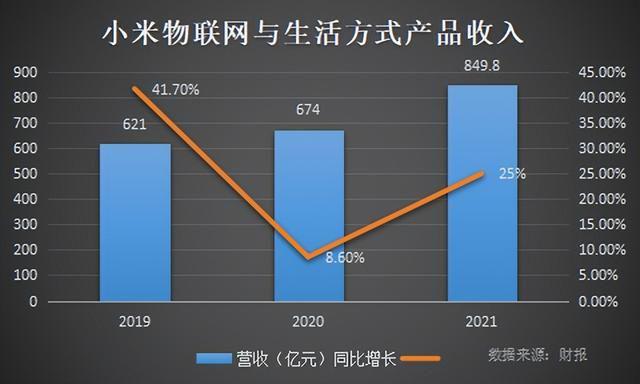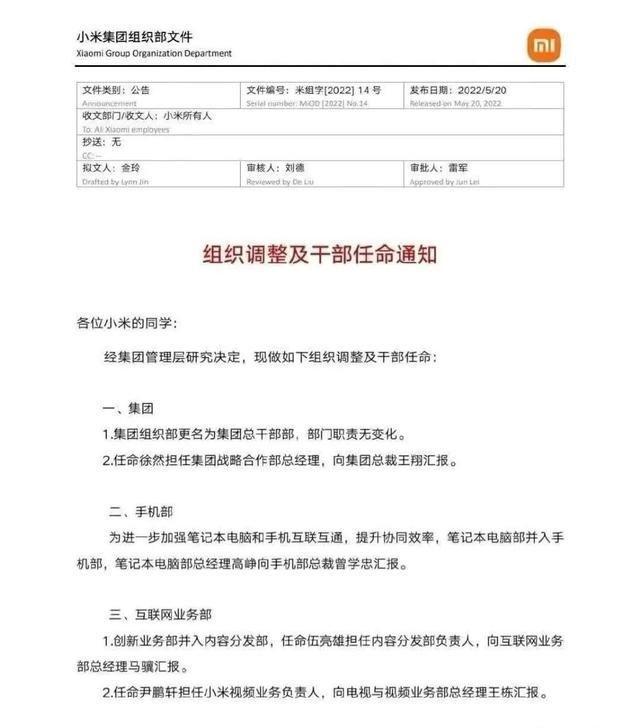On August 11th, Lei Jun, founder, chairman and CEO of Xiaomi Group, released a video in his personal Weibo, saying that his company’s account must be kept with cash that can pay 18 months’ salary. "Once the company couldn’t pay wages, I was anxious and couldn’t sleep for many nights. So that later, I must leave a sum of cash in the company’s account, that is, I will not move if the sky collapses, that is, I will ensure that I can pay my salary for 18 months. "

Expand reading:
Lei Jun’s Billion Mistakes?
Zhang Yu is a post-90 s young man who drifted north. Although he rented a house, he added a lot of smart homes to his residence.
Because of the cost performance and early use of Xiaomi mobile phone, he gradually added smart home products such as small love speakers, sweeping robots and Xiaomi wifi. "It’s all very easy to use and can meet the basic daily needs", which is Zhang Yu’s evaluation of Xiaomi’s ecology, but he wants to buy a tablet computer, and his mobile phone has been the new iPhone 13 and Xiaomi tablet for a long time, which makes him decide to buy an iPad;; Coupled with the recent collapse of Mijia App, he gradually began to think about replacing other products of Xiaomi Ecology.
At first, Zhang Yu thought that it was only his rice noodle belief that needed to be "recharged", but he saw on the Internet that "Xiaomi TV had two consecutive cases of screen glue opening" and "Xiaomi eco-chain enterprises gradually withdrew their shares", plus "Mijia App collapsed twice in two months", and when there were three hot search incidents in the past month, he realized that there might be overall problems in Xiaomi ecology.
After looking at the development of Apple and Huawei’s ecology, he said to Tech Planet: "Xiaomi has no chips and systems. The later it develops, the more it can’t be compared with ecology."
The change of Zhang Yu’s attitude towards Mijia is not a case of "rice noodles" (millet fans). In the main fan group of a rice noodle UP where Zhang Yu is located, not only the UP owner is undergoing this change, but many "rice noodles" in the group are also defecting, and those who defend Xiaomi will also be ridiculed by most people. Zhang Yu admits that he can’t tell the taste when he sees this change.
Of course, there are still many people who think that it is alarmist to look at the millet ecology. Because from the latest financial report, the number of Xiaomi AIoT connections has reached 478 million units, and the monthly life of Xiaoai students has reached 115 million units. Xiaomi TV and Xiaomi tablet are among the best shipments in China.
However, when Huawei’s notebooks, smart screens and other products continue to surpass Xiaomi, and Apple’s ecology is becoming more and more powerful, Xiaomi’s ecology has indeed received strong competition. Lei Jun, the founder of Xiaomi, used to be proud of his extremely cost-effective play, and it seems increasingly difficult to achieve "one move".
Ecological alliance gradually divided before the goal of 100 billion yuan
In 2014, Lei Jun said at the Leaders’ Forum of China Entrepreneurs that he would invest in 100 enterprises within five years, copy the Xiaomi model and build the Xiaomi ecological chain.
Starting from Huami, the earliest investment enterprise, the Xiaomi ecological chain has gone through eight years. According to the financial report, by the end of 2021, Xiaomi had invested 390 foreign companies, with a total book value of 60.3 billion yuan, a year-on-year increase of 25.7%. In eight years, Xiaomi Eco-chain has run out of many listed companies such as Huami, Roborock, No.9, Yunmi, etc. From the financial point of view, Lei Jun’s investment is very successful.
However, while becoming the first intelligent ecology, the Xiaomi ecological chain has gradually produced many cracks.
First of all, it is the internal competition of Xiaomi ecological chain. Because Xiaomi’s eco-chain has gradually divided into different circles with revenues below 1 billion, 700 million and 100 million, many eco-chain enterprises have begun to expand horizontally for revenue. For example, companies such as Roborock, Xunmi and Yunmi are doing the sweeping robot in the ecology, and smart lock companies such as Green Rice and Chuangmi are gradually stepping into the business scope of brother enterprises.
Secondly, Xiaomi gradually entered the market in the later period and began to launch many own brands. These Xiaomi’s own products are similar to the products of Xiaomi Eco-chain enterprises, and they are also sold cheaply. Xiaomi charging treasure is an example. Moreover, Xiaomi is not only in price, but also in system-level control of Xiaomi. In 2019, Xiaomi launched a self-developed Xiaomi sports watch, which directly competed with Huami sports watch. You know, the prototype of the control App“ ZeepLife "of Huami Sports Watch is still Xiaomi Sports App.
When many "rice noodles" buy eco-chain products, they are interested in Xiaomi’s brand. If Xiaomi has launched its own brand, what reason is there to buy eco-chain products?
Thirdly, the hardware profit set by Lei Jun is no more than 5%, so many enterprises hope to get rid of the low-profit foundry model and become high-quality private brands. Therefore, many eco-chain enterprises have launched their own independent brands, and some even proposed to build their own ecology, hoping to have a thorough "de-millet".
For example, in 2017, Stone Robot launched the first self-owned brand product-Stone Sweeping Robot, which gradually opened up the situation dominated by its own brand. In January, 2020, Chen Xiaoping, the founder and CEO of Yunmi Technology, also proposed to compete with Xiaomi in the field of whole house intelligence, when Xiaomi’s business still accounted for 50% of Yunmi.
Perhaps it is realized that the internal differentiation of Xiaomi’s ecological chain is inevitable. Recently, Lei Jun began to withdraw. On June 7, Company No.9 announced that the venture capital institutions under Sequoia Capital and Xiaomi Group reduced their holdings by nearly 6.5%. On May 26th, the announcement disclosed by Roborock showed that Shunwei Capital planned to reduce its holdings by no more than 4,008,000 shares again, accounting for no more than 6% of the company’s total share capital.
According to institutional statistics, it is conservatively estimated that Xiaomi enterprises have cashed in 2.268 billion yuan by reducing their holdings of Roborock and No.9 companies; Shunwei, an investment institution of Lei Jun, has cashed in 3.127 billion yuan by reducing its holdings of Roborock, No.9 Company, Huami Technology and Yunmi.
The Xiaomi ecological chain, which has weakened capital ties, has gradually alienated from various relationships. In the early days of Xiaomi, a rice-generation enterprise’s retail intelligent solution itself had little to do with Xiaomi, and since then, its business has gradually become closer to Ali, and they have jointly undertaken part of the business of Universal Studios. After accepting Ali’s investment, its corporate executives once told Tech Planet: We are not a Xiaomi eco-chain enterprise. Typically, the business card has no Xiaomi logo for a long time.
Despite the gradual differentiation of Xiaomi’s eco-chain enterprises, Xiaomi has gradually taken the lead in TV, refrigerator, sweeping robot and other fields. Qu Heng, general manager of Xiaomi’s eco-chain, said in an interview with 36Kr: "I am confident that the eco-chain sales will exceed 100 billion yuan in the next 3-5 years" (excluding Xiaomi’s household appliances and TV).
Xiaomi mode VS Apple Huawei mode
The three axes of Xiaomi mode: the ultimate cost performance, Internet marketing, and fast. This model helps Xiaomi to establish the largest millet ecology in the industry, but for Xiaomi, Lei Jun’s 100 billion mistakes may also be here, lacking the underlying infrastructure, making Xiaomi Ecology gradually become the "millet grocery store" evaluated by netizens.
Xiaomi did not invest enough in this aspect in the early days, and it was not until MIUI 13 that the slogan of "Internet of Everything" was officially launched. However, because MIUI is a system based on Android, it can’t be completely interconnected, which is especially obvious in the scene of multi-device interaction.
According to Zhang Yu, MIUI 13′ s Xiaomi mobile phone application is relayed on the tablet, and mainstream applications can be seamlessly linked, but apps like Che Di are in the form of network transmission, which is not clear and stable. Huawei launched the "Share" capability in 2019, and mobile phones, tablets and notebooks can be shared without feeling. For example, after a Huawei mobile phone touches a notebook, it can share the screen content of the mobile phone on the notebook.
The reason behind this capability is that Huawei HarmonyOS adopts distributed microkernel, and the Share SDK has been adapted to the native development of HarmonyOS OS. Moreover, Huawei’s self-developed NFC chip also ensures the efficient transmission. Just like many "fruit fans" (Apple fans), they will not hesitate to choose many Apple products because of the insensitivity of Apple Watch and iPhone, the insensitivity of AirPods and iPad, and the cross-screen collaboration of iPad and Mac.
On the other hand, Xiaomi’s mobile ecology is not that I don’t want to be so coordinated, and the key is difficult to get through at a deep level. As the core control of Xiaomi’s ecology, "Mijia App" is easily killed in the background because of insufficient running memory of mobile phones, and the control and data of many devices will be interrupted. Therefore, the current Xiaomi tablet and notebook computer are still playing at a cost-effective way. Especially after Redmi also released the notebook brand, after the price further penetrated, the prices of many products have formed a confrontation with Lenovo.
Not only in the field of mobile products, but also in the field of smart home, Xiaomi’s ecological bottom control ability is also somewhat insufficient. At present, Xiaomi Smart Home has a built-in network switch on each product layout, which is then controlled by the Wifi module. This leads to the failure of all devices in case of network problems.
In a word, network transmission has really become the heel of Xiaomi smart home. On June 16th, Mijia App announced that the service of Mijia App and voice control was abnormal due to network failure. Many rice noodles said that "the router was restarted repeatedly, the mesh was reorganized, and the App was reinstalled, thinking that there was something wrong with their equipment, which turned out to be the problem of Mijia server." Coincidentally, on April 14, Mijia App also crashed once.

Mijia user "Big Money Small General" once thought that the Xiaomi Wisdom Center he bought would play a preparatory role. I didn’t expect Xiaoai and Mijia APP to connect with Xiaomi’s server instead of the localized hub, which is completely different from the privatization deployment mode adopted by Apple’s Homekit hub. Mi Jia’s artificial input control must go through the network, and when the server crashes, Xiaomi’s smart home can’t be controlled unless there is an infrared control device or the device itself keys to control the backup.

Image from: "Big Money Small General"
In contrast, Huawei, which is better at communication, adopts PIC control bus technology, which is an integrated design of network and communication. The communication stability does not occupy Wifi resources, and combined with the control at HMI system level, it has a better control experience for the whole house intelligence.
Xiaomi also realized that this shallow control ability is not desirable for the future ecology, so he also released the Internet of Things system Vela. This operating system, which competes with Huawei HarmonyOS, is based on the open source embedded operating system Nutt. At present, it is only applied to Xiaomi watches, Wifi modules and other products and facilities, and almost no progress has been announced in two years. Maybe it is waiting for the grand appearance of Xiaomi car with Vela?
Hindsight and all-round competition
Objectively speaking, Xiaomi Ecology is still one of the best choices for consumers.
This is not only because the categories and functions of Xiaomi Ecology are far more than those of Apple and Huawei Ecology, which can meet the intelligent consumption experience of almost all scenes. And from the price point of view, it is also more affordable. A complete set of smart homes with UP main computing, including smart locks, cameras, televisions, table lamps, ceiling lamps, air purifiers, sweeping robots, switches, etc., with a low configuration of 5258 yuan and a high configuration of 11532 yuan; Huawei’s low price is 6128 yuan, and the high allocation is as high as 18385 yuan.
However, if consumers have high stability requirements for smart devices, the inherent defects of Xiaomi’s ecology will be highlighted. Recently, the two crashes of Mijia App made some rice noodles express their intention to retire on Weibo.
More importantly, the latest data from Canalys, a research institution, shows that the shipment of Xiaomi smartphones has slipped to the fifth place in the domestic market. If the number of core smartphone users declines, this will have a great ecological impact on Xiaomi.
In 2019, the sales volume of Xiaomi suddenly declined. Xiaomi insiders told Tech Planet that Lei Jun wanted to classify Xiaomi’s market into Others in the PPT of his internal speech at that annual meeting (the sales list of smart phones generally only shows the top 5 in the market, and the latter is uniformly represented by Others), so as to encourage everyone to get back the market share.
Perhaps it is the ups and downs of Xiaomi’s mobile phone sales that have also affected Xiaomi’s determination to lay out the underlying technology, and the ultimate cost-effective volume has become a business choice that is difficult to quit. Relying on AIoT to set off the 100 billion revenue of Xiaomi’s ecology has become the slogan that Xiaomi often rings.
However, according to the current revenue of Xiaomi, it takes a compound annual growth rate of about 30% for Xiaomi Eco-chain to achieve the goal of 100 billion marketing, and from the revenue growth rate of Xiaomi’s "Internet of Things and Lifestyle" (including Xiaomi’s household appliances and TV) in the past three years, it is difficult for Xiaomi Eco-chain to achieve the goal of 100 billion this year, and the growth rate has dropped sharply year-on-year. Does this mean a turning point for Xiaomi?

Obviously, Xiaomi is not unaware of this problem, so there are also many action adjustments.
The first is to increase investment in research and development. Xiaomi previously announced that it will invest 100 billion yuan in research and development in the next five years, with an average of 20 billion yuan per year. Judging from Xiaomi’s financial report in the first quarter of 2022, R&D investment was 3.5 billion, up 16% year-on-year, and 425 million was used for innovative business.
Judging from Xiaomi’s research and development of cars and the chip war being carried out by Huami OV, these investments may not be high.
On the other hand, it is to readjust the internal business. On May 21st, Xiaomi announced that in order to strengthen the interconnection between notebook computers and Xiaomi smartphones, the notebook computers would be merged into the mobile phone department. This is also a new understanding of Apple’s ecology within Xiaomi. If notebooks, PADs and smart phones are still classified and managed, the interconnection of Xiaomi’s core equipment will even lag behind the glory ecology.

Furthermore, Xiaomi Eco is also following the example of HarmonyOS Eco, and opening up a variety of equipment forms, such as mobile phones, tablet computers, smart screens, AI speakers and AITO cars. Xiaomi mobile phone+smart home+new energy vehicle, turning on home lights and air conditioners in the car center console, these smart scenes are also very promising.
One more thing, although the case of Shunwei Capital’s partial financial investment is withdrawing, Xiaomi Company is also increasing its holdings for important ecological chain enterprises. On May 7, 2021, Xiaomi announced that it would increase its holding of 27.44% of the shares of Zimi, an eco-chain enterprise, and the final shareholding ratio reached 49.91%. As mentioned in the announcement, Zimi has technical and R&D capabilities in power supply and many IoT fields, which can improve Xiaomi’s technical competitiveness in the field of 5G+AIoT.
In addition, Xiaomi also increased its holding of 2.98% shares in Jinshan by 420 million yuan, and continued to invest in the B round of financing of Suzhou Radium Laser Technology Co., Ltd. Xiaomi further strengthens ecological coordination by controlling more shares of ecologically important enterprises.
The past development of Xiaomi may prove that the "investment+mode empowerment" style of play will face "the intersection of interests, and the benefits will be scattered; In the situation that the potential intersects and the potential loses, the ecological bottom ability is the key to win the final victory.
Fortunately, in the past "618 Promotion", Xiaomi paid a total of 18.7 billion yuan for the whole platform, while Xiaomi AIoT won the first place in 148 items of JD.COM/Tmall platforms. From the perspective of sales performance, there is still a time window for Xiaomi Ecology to strengthen the underlying capacity building.
关于作者